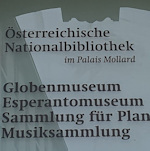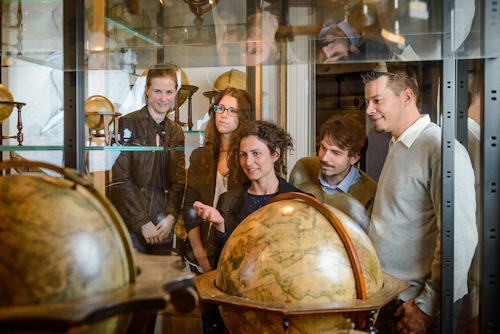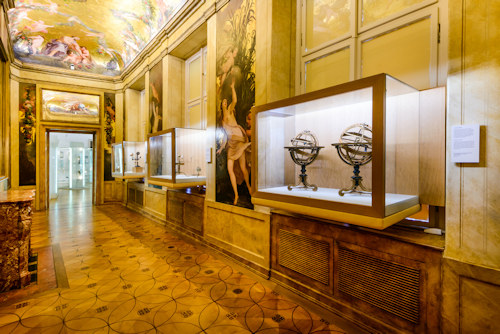
A flick of a finger and you can travel from Aberdeen to Adelaide. But globes offer more than a geographical overview of our little planet. The Globe Museum in Vienna introduces you to the art and science of these magical spheres, with some rather magnificent examples to admire.
- (Obviously) lots of globes on display, dating back as far as 1536
- Interactive learning stations, too
- Also includes celestial, moon, and planetary globes
- Entrance ticket includes the Esperanto museum
- See also:
- Vienna Museums
- One-time free entry included in the Vienna All-Inclusive Pass
Mercator and more

(Exhibition view; press photo © Österreichische Nationalbibliothek/Pichler)
Globes have something mystical about them, with the whole earth condensed into a small ball and echoes of long-gone days when “here be dragons” was a plausible entry on maps.
Most of us spent at least some time as a child poking at a globe with a finger and discovering just how little geography we know.
The Austrian National Library’s Globe Museum – the only one of its kind in the world – recreates that wonder with glass cabinets bursting with one exhibit after another.
Touchscreens introduce you to the history, production, and use of globes, as well as their digital equivalent: the hyperglobe. So you grasp their role as works of art, representative status symbols, scientific tools, and navigational aids.

(17th century terrestrial globe by Willem Janszoon Blaeu. Image courtesy of the Rijksmuseum)
All of which is fine and dandy, but the true wonder is in the globes themselves. And the museum offers up dozens to admire. For example…
- The Sphaera Stellifera celestial globe from the 1620s with its representations of star signs
- The 1541 Mercator globe, which you can also examine digitally to discover where 16th-century geographers got it right and wrong. (Poor Australia)
- A whole series of globes for the moon and solar system planets
- The richly decorated 1688 earth globe by Vincenzo Coronelli, who made globes for such luminaries as the Duke of Parma, France’s Louis XIV, and the Holy Roman Emperor Leopold I
- The 1536 globe by Gemmas Frisius in the Rudolf Schmidt collection, the oldest globe in Austria and one of the oldest surviving globes worldwide
(Oh, and as a little bonus, one of the rooms in this small museum is the 17th-century Golden Cabinet with gorgeous Baroque wall paintings.)

(The golden cabinet; press photo © Österreichische Nationalbibliothek/Pichler)
Tickets & visitor tips
The Globe and Esperanto museums of the National Library share a combination ticket that cost €5 for an adult at the time of writing. Or visit both of them once for free with a Vienna All-Inclusive Pass from Go City.
After your visit, take a short walk up Herrengasse to Michaelerplatz for one of the main entrances to the central Hofburg palace complex.
Go on past Michaelerplatz and the Stallburg imperial stables to find the National Library’s Prunksaal, which has another wonderful pair of giant Coronelli globes and perhaps a map or two on display.
Alternatively, walk in the other direction down Herrengasse for Café Central, possibly my favourite coffee house in the city in terms of interior decoration.
How to get to the globe museum
Rather aptly for an institution of terrestrial and celestial navigation, you should have no trouble finding the Globe Museum, which has premises in the very central Palais Mollard along with the Esperanto Museum.
Subway: Take the U3 line to Herrengasse station and the building is more or less opposite the Herrengasse exit.
Tram/bus: Take bus 1A or 2A to the Herrengasse or Michaelergasse stops.
Address: Herrengasse 9, 1010 Vienna | Website